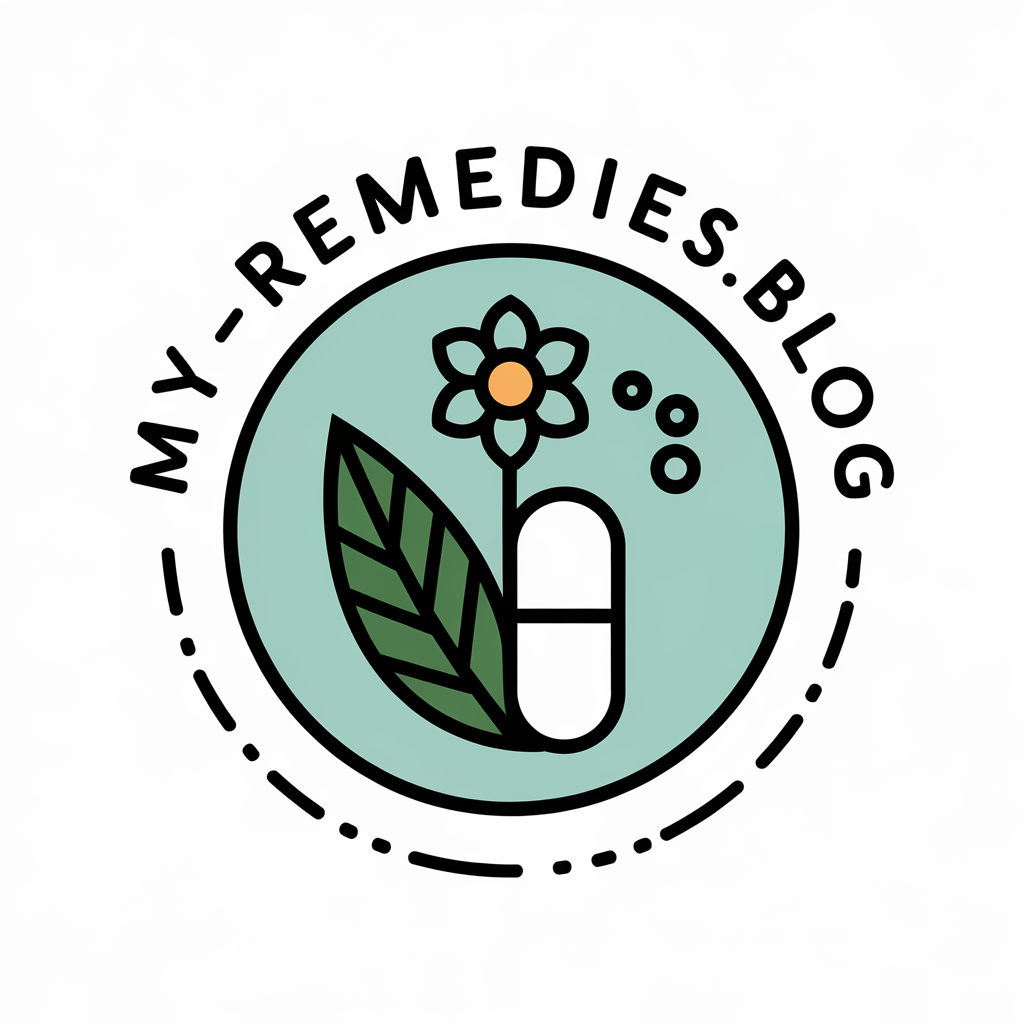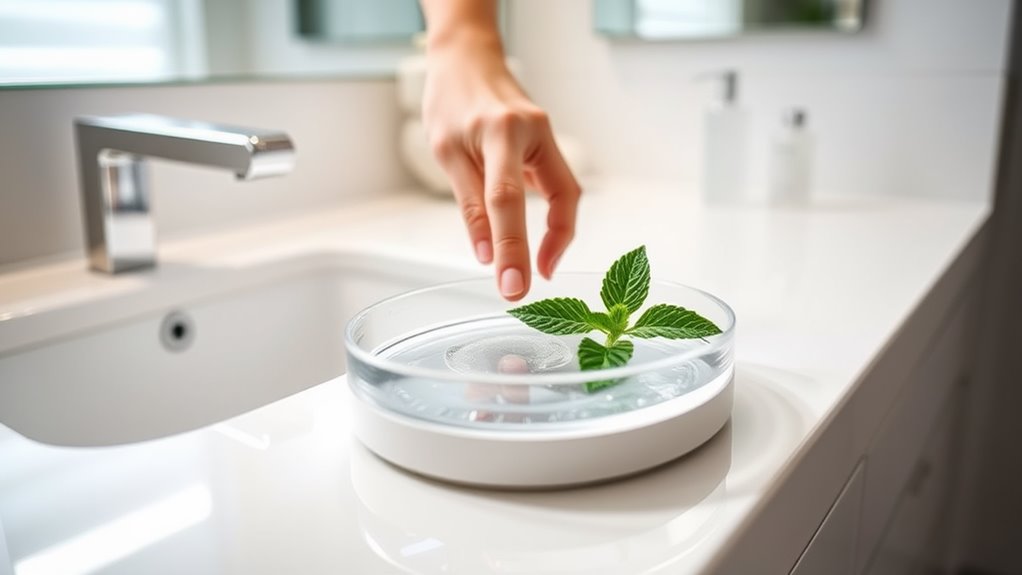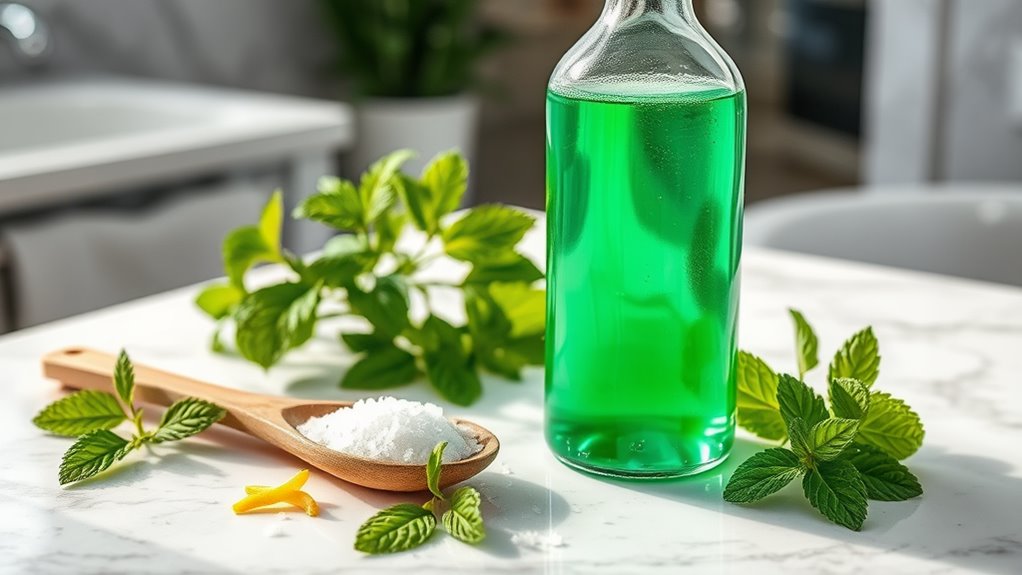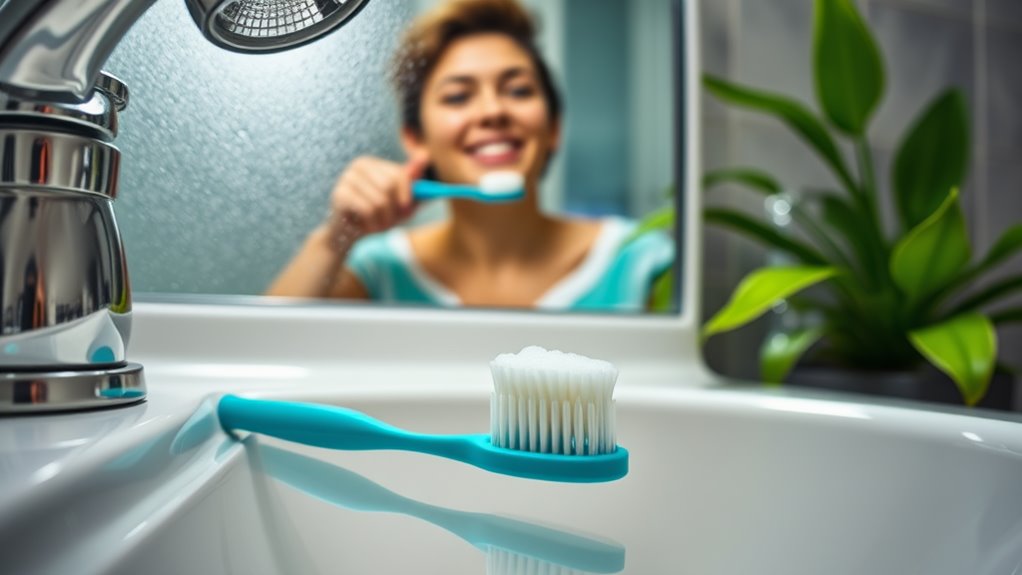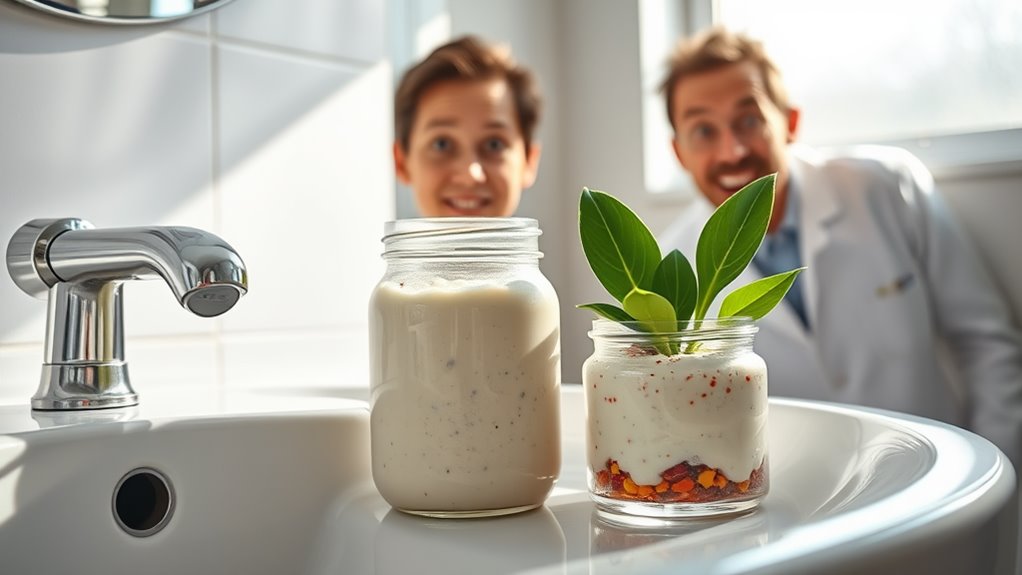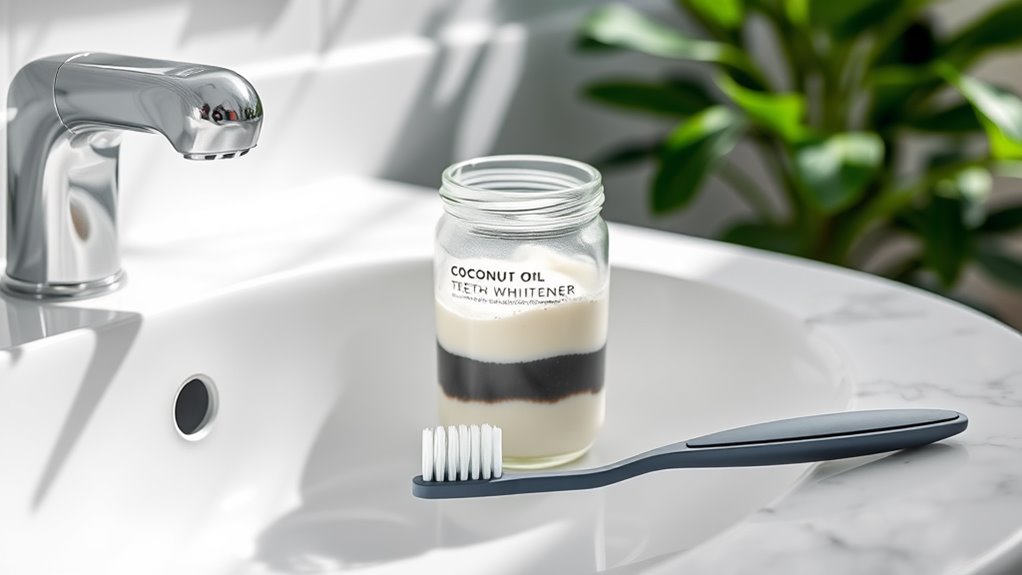Whiten Your Teeth at Home Using This Safe Method
To whiten your teeth at home safely, use a mixture of baking soda and hydrogen peroxide. This paste effectively removes surface stains while balancing mouth pH. Incorporate natural ingredients like coconut oil for added antibacterial benefits and improved oral health. Remember to brush twice daily, floss, and maintain a diet rich in crunchy fruits and vegetables while limiting staining foods and drinks. For additional tips and techniques, consider exploring more on this topic.
Key Takeaways
- Mix baking soda with hydrogen peroxide to create a safe whitening paste for brushing your teeth.
- Use activated charcoal carefully to adsorb stains from the teeth surface.
- Apply over-the-counter whitening strips according to instructions for effective at-home whitening.
- Maintain good oral hygiene by brushing, flossing, and rinsing daily to prevent new stains.
- Consult a dentist before starting any whitening treatment to ensure safety for your enamel and gums.
Understanding Teeth Staining
Understanding teeth staining is essential if you want to achieve a brighter smile. Stains can occur due to various factors, including food and drinks like coffee, red wine, and berries. Tobacco use and poor dental hygiene can exacerbate the issue as well.
It’s crucial to recognize that stains can penetrate the enamel, making them challenging to remove. For those seeking natural teeth whitening solutions, focusing on prevention is key. Regular brushing, flossing, and rinsing can help reduce the accumulation of stain-causing substances.
Additionally, consider incorporating teeth-friendly foods like crunchy fruits and vegetables into your diet. By understanding the causes of teeth staining, you can take proactive steps toward maintaining your smile’s brightness and overall dental health.
Common Natural Whitening Ingredients
When considering natural teeth whitening, baking soda and coconut oil are two popular ingredients to explore. Baking soda acts as a gentle abrasive, effectively removing surface stains, while coconut oil boasts antibacterial properties that can improve oral health. Incorporating these ingredients into your routine can lead to a brighter smile and better dental hygiene. Additionally, natural ingredients often have scientific backing for their effectiveness in whitening.
Baking Soda Benefits
Baking soda is a popular ingredient in many home whitening remedies due to its mild abrasive properties and ability to neutralize acids in the mouth. By gently scrubbing your teeth, it helps remove surface stains, which can lead to a brighter smile.
Since it’s alkaline, baking soda balances the pH in your mouth, reducing harmful bacteria that contribute to plaque buildup and bad breath. Additionally, this ingredient is cost-effective and easily accessible.
Using baking soda regularly can enhance your oral hygiene while providing a natural whitening effect. Just be sure to use it in moderation to protect your enamel from potential wear.
Coconut Oil Uses
Coconut oil has gained popularity as a natural remedy for teeth whitening due to its unique properties. This versatile oil doesn’t just whiten teeth; it also promotes overall oral health.
By incorporating coconut oil into your routine, you can take advantage of its numerous benefits.
-
Antimicrobial Properties: Fights bacteria that cause plaque and cavities.
-
Moisturizing Effect: Keeps gums healthy and prevents dryness.
-
Natural Whitening: Gently lifts stains without harsh chemicals.
-
Freshens Breath: Combats bad breath, leaving your mouth feeling clean.
Using coconut oil for oil pulling or as an ingredient in homemade toothpaste can enhance your teeth whitening efforts while supporting your oral hygiene.
Embrace this natural approach for a brighter, healthier smile.
Effective At-Home Whitening Techniques
Although professional whitening treatments are often effective, many people find at-home techniques to be a convenient and budget-friendly alternative.
One popular method is using baking soda and hydrogen peroxide, which can act as a natural abrasive and mild bleaching agent. You can mix a small amount of both into a paste and gently brush your teeth.
Another option is using activated charcoal; it can adsorb stains when applied carefully. Additionally, try whitening strips specifically designed for home use; these often contain a safe concentration of bleaching agents.
Lastly, maintaining good oral hygiene and limiting stain-causing foods and drinks, such as coffee and red wine, can help keep your smile brighter. You’ll see noticeable results with consistent practice.
Safety Precautions for Teeth Whitening
When considering teeth whitening, it’s crucial to prioritize safety to avoid potential damage to your enamel and gums. Taking a few simple precautions can help you achieve a brighter smile without compromising your dental health.
-
Always consult your dentist before starting any whitening treatment.
-
Use products specifically formulated for at-home whitening; avoid DIY or untested remedies.
-
Follow the instructions carefully, including recommended application time.
-
Monitor your sensitivity; if discomfort occurs, stop the treatment immediately.
Maintaining Your Bright Smile
To keep your smile bright after whitening, it’s essential to maintain a consistent daily oral hygiene routine.
Pay attention to how your diet can affect the longevity of your results, as certain foods and beverages can contribute to staining.
Daily Oral Hygiene Routine
A consistent daily oral hygiene routine is essential for maintaining a bright smile and healthy teeth. By integrating simple practices into your daily life, you can effectively keep your teeth white and prevent dental issues.
Here are key elements to include in your routine:
- Brush your teeth at least twice a day with fluoride toothpaste.
- Floss daily to remove food particles and plaque from between your teeth.
- Rinse with an antibacterial mouthwash to fight bad breath and prevent gum disease.
- Schedule regular dental check-ups every six months for professional cleaning and evaluation.
Implementing these steps not only brightens your smile but also enhances your overall dental health.
Make it a priority, and you’ll enjoy the benefits of a radiant, confident smile every day.
Diet Impact on Whitening
Your diet plays a crucial role in maintaining a bright smile, as certain foods and beverages can either contribute to or detract from the whiteness of your teeth.
To keep your smile radiant, limit consumption of dark-colored drinks like coffee, red wine, and colas, which can stain enamel. Acidic foods, such as citrus fruits, may weaken enamel, increasing the risk of discoloration.
Instead, focus on crunchy fruits and vegetables like apples and carrots that can naturally scrub your teeth. Dairy products can help neutralize acids and strengthen enamel, promoting a brighter smile.
Staying hydrated with water helps wash away food particles and prevents plaque buildup.
When to Seek Professional Help
When should you consider seeking professional help for teeth whitening? If you’ve tried at-home methods without seeing results, it’s time to consult a dental professional. They can offer personalized solutions and ensure your safety throughout the process.
Consider seeking help if:
- You have underlying dental issues, like cavities or gum disease.
- Your teeth become sensitive or painful after home treatments.
- You want a faster and more effective solution tailored to your needs.
- You have significant discoloration that might require more intensive treatment options.
A professional can guide you through the best options, ensuring you achieve the bright smile you seek without compromising your dental health.
Don’t hesitate to ask for expertise when it comes to your oral care.
